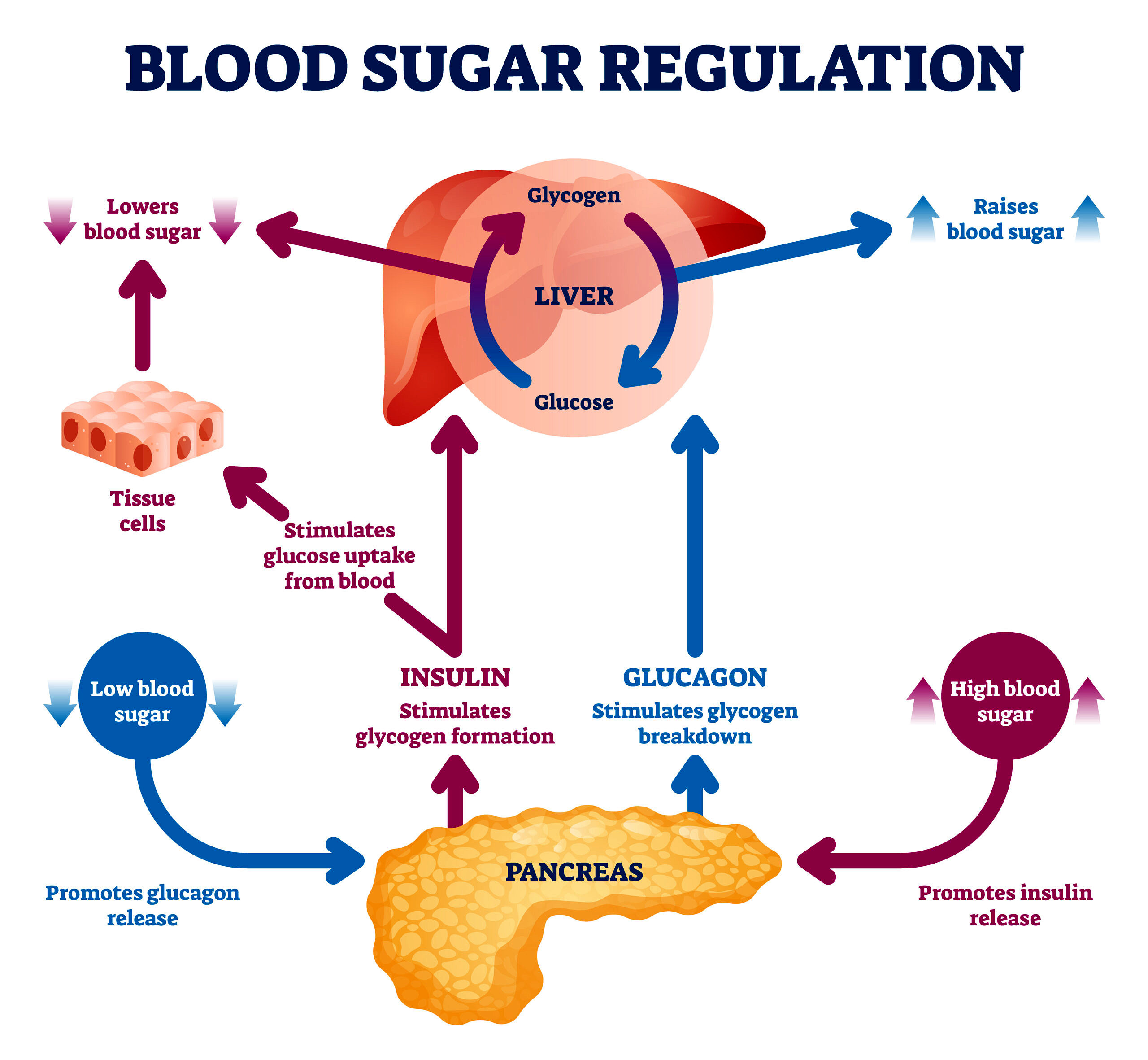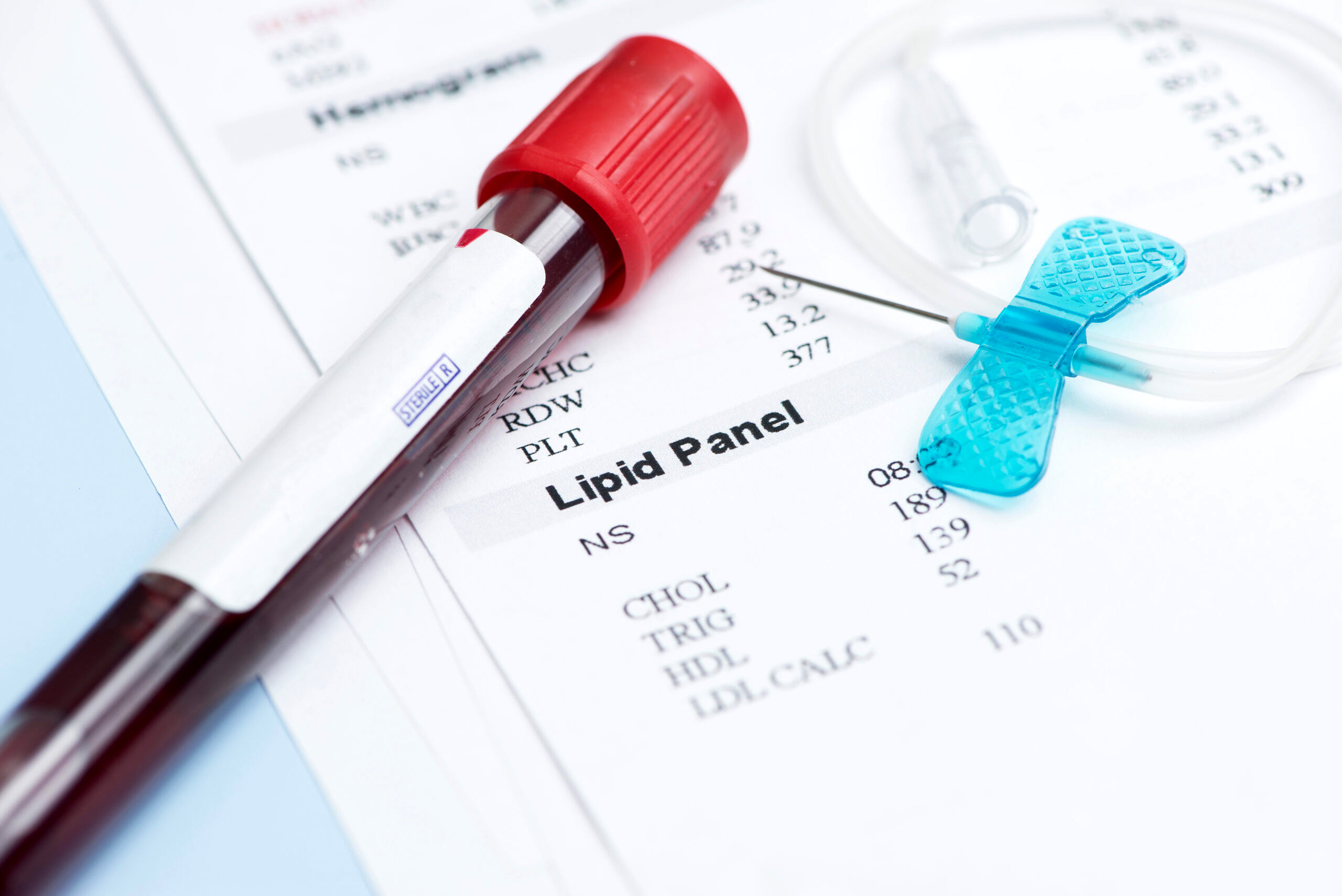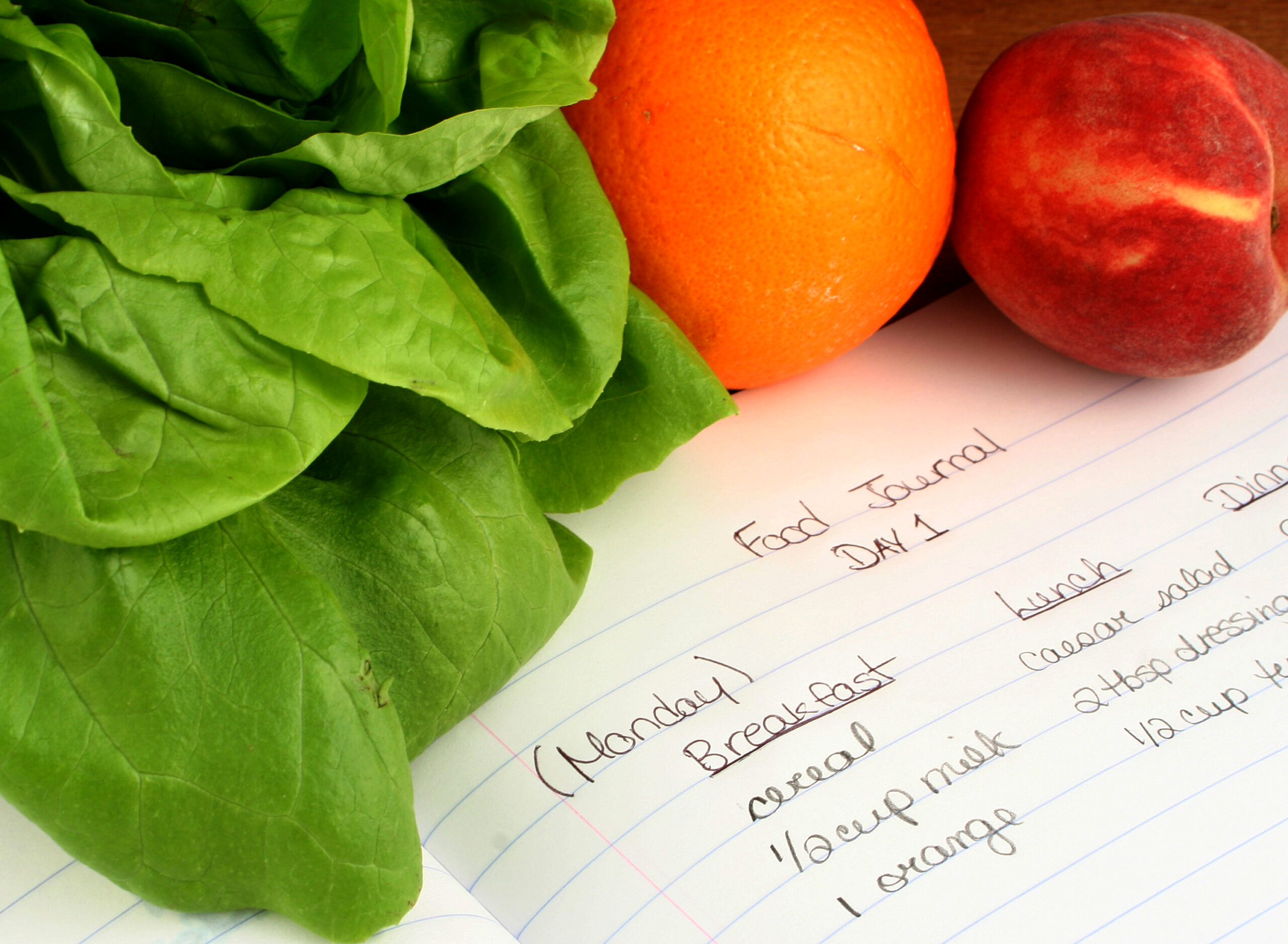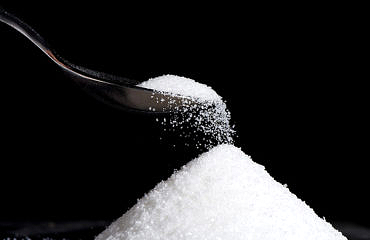How to become a fat burning machine
Our bodies need to burn fat, not calories, in order to lose weight. If you have experienced the extreme disappointment you felt after following a low calorie diet, you are not alone. And I’ve been there myself. It doesn’t work.
With calorie reduction, you are depriving your body of energy your body needs to survive. Fat is a form of stored energy, so to protect you, the body adapts to this deprivation by storing fat, not burning fat. Healthy weight loss is a result of your body burning fat for energy. And this happens at the hormonal level.
 Hormonal control of digestion
Hormonal control of digestion
Hormones are chemical messengers that regulate numerous biological functions. To deliver a message, hormones must attach to the target cell by binding to the receptors which are attached to the cellular membrane.
Hormones play a role in when and how you eat.
- Peptide YY controls your appetite
- Ghrelin tells your body when it’s hungry
- Leptin tells your body when it’s full
- Insulin regulates energy metabolism by controlling blood sugar levels in your body
This is what happens when we eat. Food is broken down by the digestive system into usable components. All foods such as proteins, fats, and carbohydrates, will eventually be converted into glucose. Certain foods raise blood sugar more than others. Refined carbohydrates, such as white flour and white sugar, raise blood glucose more than fats and proteins.
This rise in blood sugar stimulates the production of insulin, which is a protein hormone secreted by pancreatic beta cells. The hormone insulin binds to the insulin receptor to bring glucose into the cell. Insulin is like the key, and the insulin receptor is like the lock. And the key unlocks the gate so that the glucose can enter the cell. The uptake of glucose into the cell is then used for energy, which is utilized in all cells of the body.
How your body regulates energy
Excess glucose is turned into glycogen in the liver. This process is called glycogenesis. This is how glucose is stored for later use. The liver only has limited space for glycogen, so when the liver becomes full, excess glucose is turned into fat, and this process is called lipogenesis.
Several hours after a meal, as blood sugars and insulin levels start to drop, the liver starts to reverse glycogen storage by breaking down the stored glycogen into glucose to release into the bloodstream for energy. So in the short term, such as while you’re sleeping, the body produces energy from its glycogen stores.
During a prolonged fast, your body can make glucose from its fat stores. Fat is burned for energy. This process is called gluconeogenesis. Glycogenesis, lipogenesis, and gluconeogenesis, are all normal metabolic responses of the body.
Insulin’s role in the body
It’s the insulin’s job to keep your blood sugar from going above 100 milligrams per deciliter (mg/dL). In case you have no idea what a 100 mg/dL looks like, allow me to explain:
100 mg/dL converts to 0.008 pound per gallon. This is approximately 3/4 of a teaspoon per gallon. Now if the average adult weighing about 180 pounds has 1 1/2 gallons of blood in their body. In other words, normal blood sugar should be at about one teaspoon per one and a half gallons!
Do you know what the average sugar consumption per day in this country is? 30 teaspoons! That’s about 120 pounds per year that one body has to process. That is very excessive. And when the body has to deal with that much glucose, the cells eventually become unresponsive to insulin and the gates no longer open to allow the transport of glucose from the bloodstream into the cells. This is known as insulin resistance.
Insulin resistance
Chronic elevated glucose is toxic and will cause dangerous impacts in the body. And when glucose cannot enter the cell due to insulin resistance, it will become oxidized by free radicals. This damages the cell. This is cellular inflammation. This is what underlies many of the chronic illnesses we see today. Cellular inflammation impacts all body tissues, such as the nerves, the brain, the eyes, the blood vessels, and the kidneys.
Insulin resistance is the key player in the development of type two diabetes and pre-diabetes. Individuals who are insulin resistant and not yet diabetic, are classified as suffering from metabolic syndrome.
- More than 120 million Americans, which is about one in three Americans, are affected by metabolic syndrome
- More than 37 million Americans, which is about one in 10, have type two diabetes
- Metabolic syndrome is also closely linked to obesity and other serious conditions, such as hypertension, cardiovascular disease, and cancer
- Other conditions associated with metabolic syndrome are fatty liver, polycystic ovarian syndrome, or PCOS, gallstones and kidney disease.
So this is a pretty serious issue. And what makes this condition so dangerous is that there are usually no immediate symptoms of insulin resistance. Abnormal cholesterol and high blood pressure may not even cause any symptoms until they become more advanced.
Signs of insulin resistance. The body has to do something with this extra glucose, which cannot be used for energy. Therefore, it will be converted to visceral fat, which is fat around the organs, and subcutaneous fat, which is fat under the skin. So it’s typically the extra fat that is gained around the waist and the weight loss resistance that gets a person’s attention.
Extreme fatigue, especially after a high carbohydrate meal, is an early sign of insulin resistance. This occurs because energy is now being put into the biochemical process of lipogenesis, which is the fat production.
And other early signs of insulin resistance include sugar cravings, chronic joint pain, sleep trouble, and frequent headaches.
5 steps to becoming a fat-burning machine
Now, these action steps I’m about to recommend revolve around removing the barriers to healing and restoring the building blocks of our bodies, which are our cells.
 1. Invest in a through health assessment
1. Invest in a through health assessment
My first, and I believe the most important recommendation is that you invest in a thorough health assessment that includes a comprehensive blood chemistry panel to measure your degree of insulin resistance. Because there are typically no early symptoms, blood work will let you know how your body is functioning metabolically.
A comprehensive assessment is necessary along with a thorough health history and physical examination to provide a vivid picture of what is really going on in the body and what you can do to fix it. And when you understand the cause of the problem, you can fix the problem.
I have administered this type of evaluation to new patients during their initial stages of care to learn more about their states of health and sources of illness. The blood chemistry analysis will identify particular imbalances and abnormalities.
Very few medical doctors will order these types of tests and oftentimes will diagnose in theory based on the symptoms you provide them.
So why isn’t more comprehensive testing done in doctor’s offices? Let me put it this way. For some time now, there has been a decline in the quality of healthcare in the United States, in which profit takes priority over comprehensive health examinations. This is largely due to managed healthcare and HMO programs. The current model used by these programs is more or less a disease-management system. Whereas the comprehensive blood chemistry panel provides early detection and often prevention of disease and illness.
Comprehensive blood testing is considered unnecessary under their guidelines and is therefore not covered. This is why the use of comprehensive blood testing is non-existent, which oftentimes lead to overlooked or misdiagnosed illnesses and diseases. Lab results also establish a baseline and provide the information needed to determine the severity of your condition and some insight on the underlying cause of your health problems. They are also used as a tool to determine your degree of inflammation and assist in preparing your treatment program specifically designed for your healthcare needs. Understanding exactly what is going on in your body will outline the steps that are required to get you well.
2. Keep a daily food journal
The next step I recommend is keeping a daily journal, logging your food and beverages. The purpose of this journal is to become more aware of your eating habits and how your body responds to them. Too many of us are eating in automatic mode and it becomes habitual. Some of us are not even aware of how much we are actually eating. And until you write it down, you will not be completely aware of what and how much you are putting into your mouth.
As you keep your journal, note your habits.
- What do you recognize?
- Do you plan your meals or do you tend to eat on the run?
- Are you constantly snacking?
- What types of foods are you eating?
- Is your diet high in sugar and refined carbohydrates?
- Do you primarily eat at restaurants or dine at home?
- How’s your water intake?
- Do you tend to hydrate with sodas and juices?
Answer these types of questions as you review your diary and start to observe where you can make the most changes. You can also include how you feel, your sugar levels, or your blood pressure levels if needed. I have found this action to play a powerful role in the healing process.
And the purpose of this journal is not to make you feel bad or guilty. It’s to help you recognize where you need to make the most changes.
The last thing I want to encourage is guilt and the need to be perfect. The journal is there to assist you in determining what areas you need to make those improvements.
3. Change your dietary habits
The next action you need to take is that you must change your dietary habits. You cannot eat what and when you want anymore. Your diet must promote cellular healing and reduce those dangerous insulin surges, mainly caused by highly refined carbohydrates.
Elevated blood sugar raises insulin levels. High insulin levels lead to excessive fat storage. Excessive fat storage leads to obesity. When insulin is high, fat and glycogen storage is turned on and fat burning is turned off. When insulin is low, fat and glycogen storage is turned off and fat burning is turned on.
The reason why a low carbohydrate diet is effective is because it includes foods that are low in sugar and refined grains, and rich in fiber, healthy fats, and moderate protein. Food choices can include the following, grass-fed beef, full range poultry, wild game and wild fish, cultured dairy from grass-fed cows, fruits and vegetables, preferably organic and locally grown. It is also important to avoid the following foods, sugar and grains, such as refined wheat, rice, and corn. Now, this is just the beginning. I have a very comprehensive list in the Food Shopping Guide.
Now, just remember, it’s not necessary to be a 100% perfect to see results. It’s about progress, not perfection. Choose what you can handle or afford, and incorporate more into your life as you go. Reversing insulin resistance is a process. Be patient. As you continue to learn and understand your body during the journey, you will begin to create healthier habits over time. The more compliant and committed you are to the process, the more successful you’ll become. You have to evaluate your circumstances to determine which action steps you need to take. We all have different needs, and they do vary from person to person.
4. Begin intermittent fasting
The next action step involves intermittent fasting. Fasting is the most powerful method to decrease insulin levels. All foods raise insulin and every time you eat, you elevate insulin levels. Therefore, the best way to reduce insulin surges, is to reduce the number of times you’re eating during the day.
When insulin remains low, the body switches to fat burning for energy. Now, many people don’t know this, but glucose is not the preferred fuel of the body. Fat is. Fat is a cleaner form of energy than glucose. You want your body to be an efficient fat burner, not a sugar burner.
Now, if you’ve never tried intermittent fasting, it’s best to start slow. So for starters, stop snacking throughout the day, or you can skip breakfast. Many of you aren’t even hungry in the morning, but you eat anyway. And if you do eat breakfast, it’s typically high in carbs such as donuts and cereal and oatmeal.
Then eventually you can work up to fasting 18 to 24 hours, one to three times per week. I wouldn’t recommend going beyond that without professional supervision, especially if you are taking any type of medication.
I’ve incorporated intermittent fasting in my life and found it to be very beneficial in restoring my health. At first, I used to get lightheaded if I didn’t eat every two hours. But now my body is an efficient fat burner and I can go many hours, even days without needing to eat.
Studies have shown that intermittent fasting not only extends your life, but also cause hormonal and metabolic changes that aid in weight loss and can ward off heart disease, diabetes, and even cancer. It also downregulates inflammation and helps with insulin sensitivity.
5. Incorporate high intensity training
And the last action step I will share with you today is to incorporate high intensity training. This is the best type of workout for fat loss, and the way you do this is work out at a high intensity, such as riding a stationary bike, running, or a fast walk, and do this for about 20 to 40 seconds, followed by 90 to 120 seconds of rest or low impact for recovery. And then you repeat this for four to eight cycles, and you can adjust this according to your fitness levels.
During high intensity, the body is burning, stored sugar or glycogen and burns fat for the next 24 to 48 hours after the workout to replace those glycogen stores. This increases overall metabolism and turns the body from a sugar burner to a fat burner.
Takeaways
- Hormones are chemical messengers that regulate many biological functions
- The hormone insulin regulates energy metabolism by controlling glucose levels in your body
- An increase of glucose in the bloodstream stimulates the release of insulin. Insulin resistance happens when the cells become unresponsive to insulin and no longer allows glucose to enter the cells for energy
- Metabolic syndrome is closely linked to obesity and other serious health conditions, such as hypertension, cardiovascular disease, and cancer
And here are your key action steps:
- Invest in a thorough health assessment performed either by myself or another qualified health practitioner
- Keep a daily journal to track your food and habits
- Follow a low carb diet
- Fast intermittently
- Incorporate high intensity training in your workout routine
Let’s talk about how I can help you get to your ideal health destination. Schedule your Breakthrough Call: CLICK HERE to get on my schedule.
Download your free Food Shopping Guide and don’t forget to check out The Heal Deal Podcast for more valuable insights into your journey to healing.
Until next time, go out there and achieve more freedom in your health and your life!
Dr. Leona



